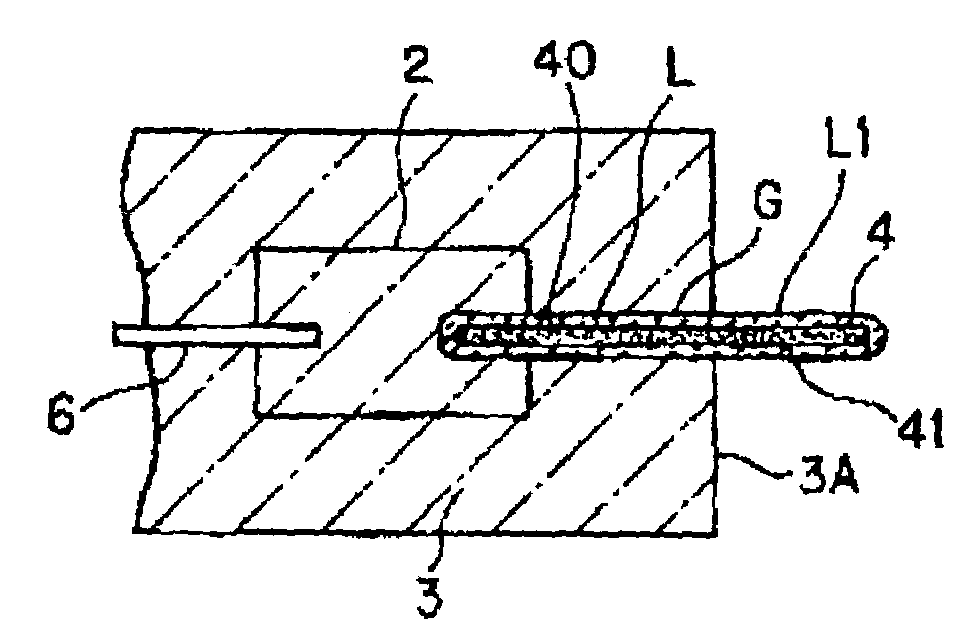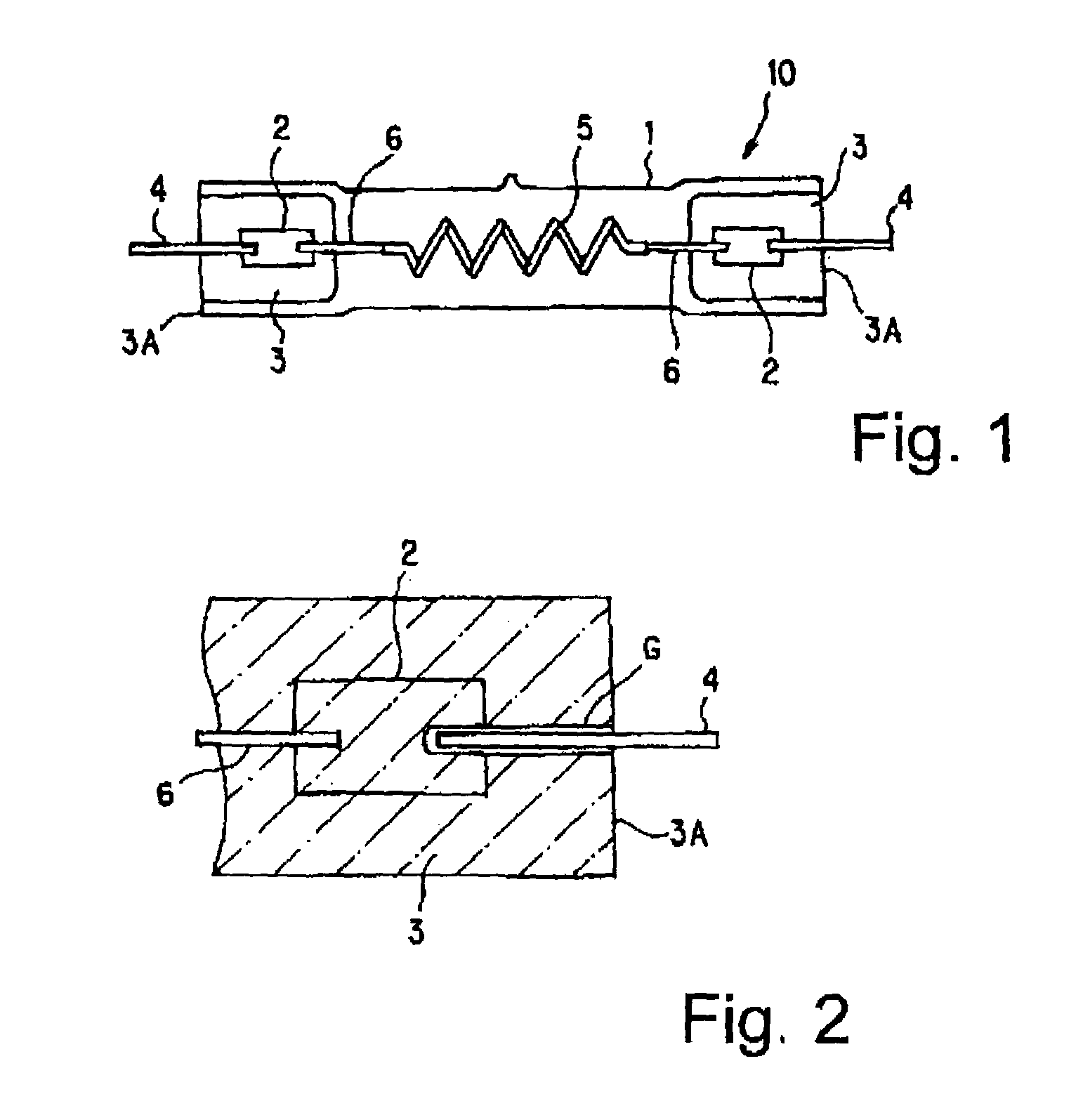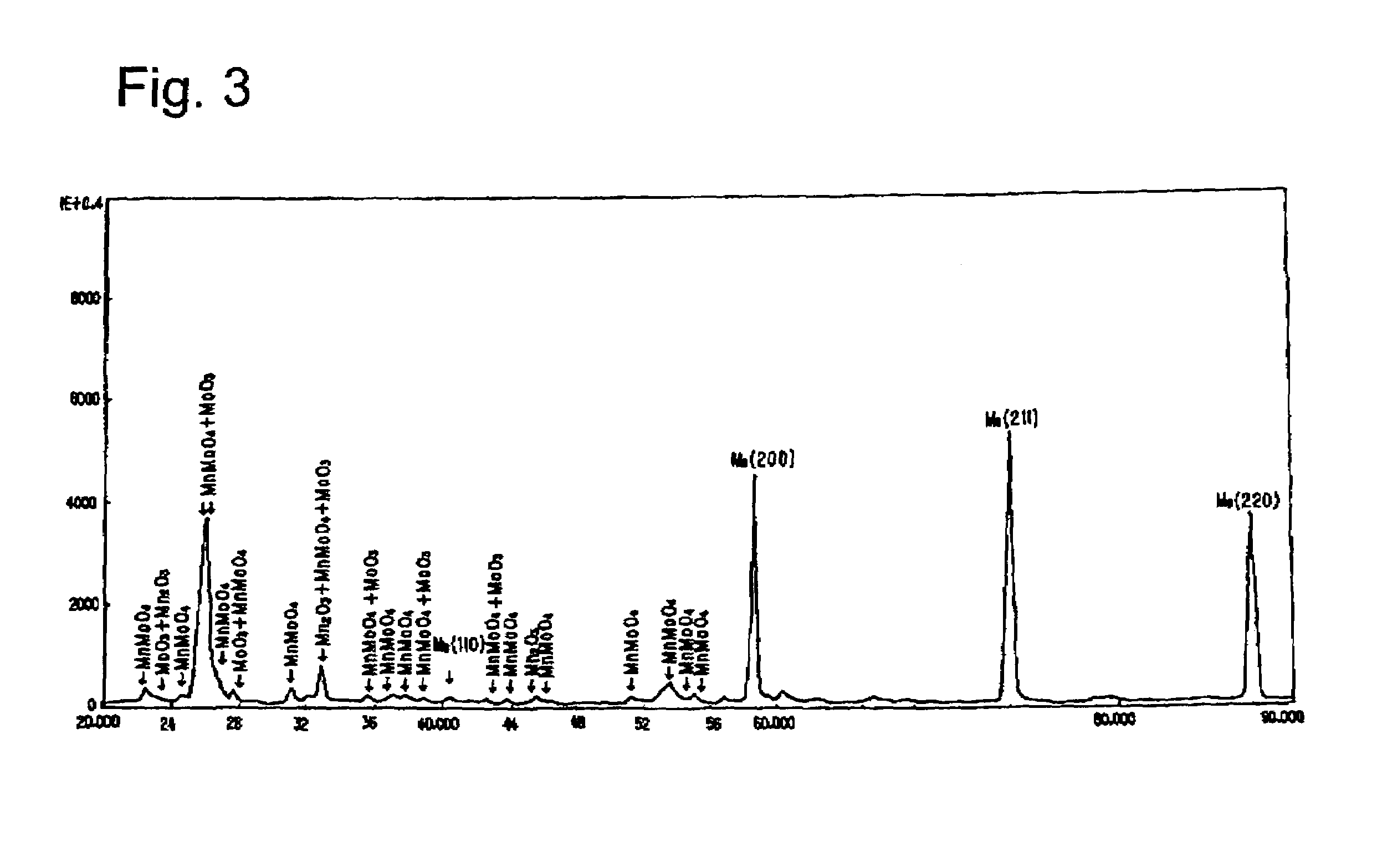Foil seal lamp
a seal lamp and oil-filled technology, applied in the direction of leading-in conductors, gas-filled discharge tubes, other chemical processes, etc., can solve the problems of crack formation in the seal area, glass does not flow according, and it is impossible to completely eliminate the cavity g, so as to achieve the effect of long service li
- Summary
- Abstract
- Description
- Claims
- Application Information
AI Technical Summary
Benefits of technology
Problems solved by technology
Method used
Image
Examples
embodiments
[0117]The outer shape of the foil seal lamp is identical to that of the filament lamp described in the prior art. The feature of the invention is described using FIG. 9.
[0118]As is shown in FIG. 9, in the vicinity of the molybdenum outer lead 4, there is an extremely small cavity G which extends from the outer end face 3A of the seal area 3 to the molybdenum metal foil 2. The outer lead 4 projects from the seal area 3 to the outside.
[0119]If a sealant L (also called a “sealant for forming a protective coating L”) which is formed of an aqueous solution of a nitrate with element / elements chosen from one or more of the elements magnesium, calcium, strontium, barium, manganese, cobalt, nickel, titanium, scandium, yttrium, lanthanum, cerium, praseodymium, neodymium, samarium, europium, gadolinium, terbium, dysprosium, holmium, erbium, thulium, ytterbium, and lutetium is allowed to drip in a suitable amount by a suitable injection means into the outer periphery of the outer lead 4 on the ...
experimental example 1
[0133]An embodiment of the invention is described below.
[0134]A tungsten-halogen lamp of the double end type is produced in which there are seal areas on both sides of a silica glass bulb, as is shown in FIG. 1.
[0135]In the example which is shown in FIG. 9 and which corresponds to claim 1, an aqueous Mn(NO3)2 solution, as the sealant for forming the protective coatings, was allowed to drip into the cavity which is present on the outer end face of the seal area. The sealant for forming the protective coatings penetrated the cavity between the silica glass and the molybdenum outer lead and traveled to the outer end of the molybdenum metal foil.
[0136]It appears that this sealant for forming the protective coatings fills the cavity and that the metal foil and the outer lead becomes wet. Such a lamp is placed in a drying furnace and dried. The lamp, after drying in an electric furnace, was heat treated to form a protective coating of crystalline molybdate on the surfaces of the molybdenu...
PUM
| Property | Measurement | Unit |
|---|---|---|
| surface roughness | aaaaa | aaaaa |
| temperature | aaaaa | aaaaa |
| temperature | aaaaa | aaaaa |
Abstract
Description
Claims
Application Information
 Login to View More
Login to View More - R&D
- Intellectual Property
- Life Sciences
- Materials
- Tech Scout
- Unparalleled Data Quality
- Higher Quality Content
- 60% Fewer Hallucinations
Browse by: Latest US Patents, China's latest patents, Technical Efficacy Thesaurus, Application Domain, Technology Topic, Popular Technical Reports.
© 2025 PatSnap. All rights reserved.Legal|Privacy policy|Modern Slavery Act Transparency Statement|Sitemap|About US| Contact US: help@patsnap.com



